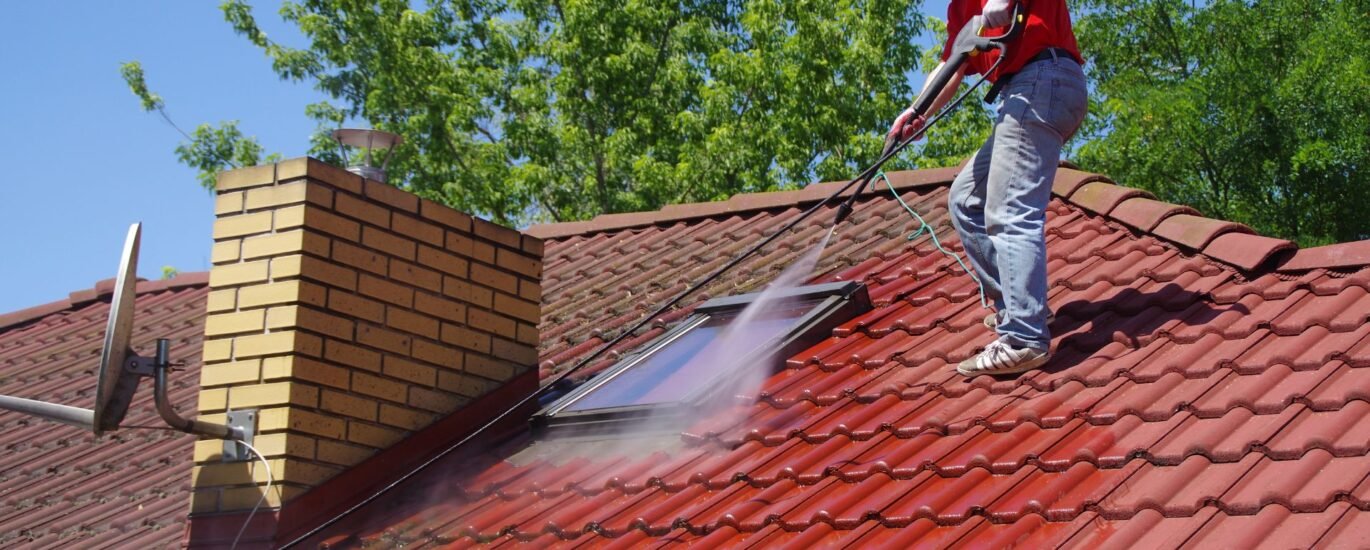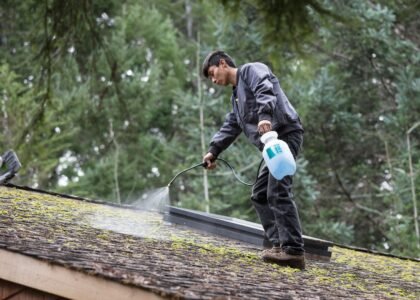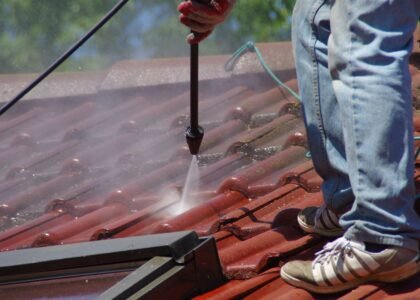Moss might look harmless — just a green patch on your roof — but left unchecked, it can lead to serious damage. In this post, we’ll walk through why moss matters, how it harms your roof over time, and practical steps you can take (or hire a pro for) to keep your roof healthy and moss-free.
The Problem With Roof Moss
- Moss retains moisture, and that constant dampness can degrade shingles, underlayment, and flashings.
- It can lift shingle edges, break seals, or allow water intrusion under the roofing surface.
- In shaded, cooler, moist climates (like Everett’s), moss thrives — making regular roof cleaning a necessity.
Moss isn’t the only culprit. Algae leaves dark streaks, while lichen forms stubborn crusty patches that dig into roofing surfaces. Left alone, these organisms work together to shorten the lifespan of your roof.
The Lifecycle of Moss Growth
Moss spreads by spores carried via wind, birds, or debris. Once they land in shaded and damp conditions, they thrive. Overhanging branches, clogged gutters, and poor ventilation create perfect breeding grounds.
The longer moss is left, the deeper its roots grow into your shingles. That makes it harder to remove later and increases the risk of roof damage.
Safe Roof Cleaning & Moss Removal Methods
Avoid high-pressure washing. It may look effective, but it can strip protective granules and void manufacturer warranties.
Safer alternatives include:
- Low-pressure soft washing with biodegradable cleaning solutions
- Manual removal with soft brushes, always brushing downward to protect shingles
- Treatments that kill moss at the root, allowing it to naturally dry and release
When to Hire a Professional
If your roof is steep, heavily covered, or difficult to access, it’s time to call a professional. They bring the right safety gear, cleaning solutions, and methods for long-term results.
Learn more about professional services here: Roof Cleaning & Moss Removal
Prevention Tips
- Trim back overhanging branches to allow sunlight
- Keep gutters clear to improve drainage
- Improve attic ventilation to reduce humidity
- Install zinc or copper strips to discourage moss growth
- Schedule periodic cleaning before moss takes hold
Conclusion
Moss is more than an eyesore — it’s a slow-acting threat. Whether you tackle it yourself or hire experts, staying proactive is key. If you’d like help with your roof, reach out through our contact page.



